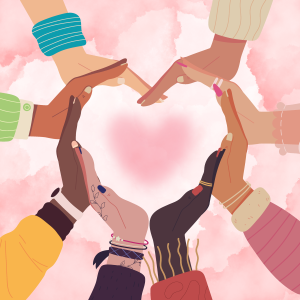
The idea of inclusion in libraries has really hit home with me this week. After reading “Do You Want to Dance? Inclusion and Belonging in Libraries and Beyond” by Christian Lauersen, I reflected on the idea that everyone agrees with inclusion in library, but there are hidden biases that can make us sometimes unconsciously hyper vigilant against individuals or groups of people.
I have witnessed this especially with unhoused individuals. They come into the library with a backpack or bags of their belongings. My library does not have an official policy on what they can bring in but I know some libraries limit the amount of bags as they can block walkways and present hazards. When they enter the building, it is like a trigger, I have seen staff and patrons both go on high alert like they are already convinced that they are going to cause a problem. When really they are there just like anyone else.
Libraries are supposed to provide safe spaces for the community and of course no one wants to have any issues but it’s like they want to act first to prevent any issue happening by giving into that hidden bias that there is a potential for an issue to arise before one does. This hyper vigilance includes watching them more closely than any of the other patrons as well as assuming they are in need and step in to get them help without them asking for it. No one really says they should not be in the library but there seems like there is more awareness around their presence than any other patron. They basically have to prove that they aren’t going to cause a problem over a period of time of being in the library before people start to calm down and pay them no additional attention. And to me it doesn’t sound very inclusive.
So this article had me thinking about how libraries can be more inclusive to unhoused individuals? With the state of the world right now there, I wouldn’t doubt that there will be an increase over time and they are going to need places to go just to be out of the heat or the cold.
One of my favorite points made by Lauersen was “diversity is being invited to the party. Inclusion is being asked to dance”. And I think this is great way to think about the difference between the two concepts we must embrace as library professionals. Because I think it’s about making people feel comfortable and welcome in the space. Even though everyone is invited it’s important to make them feel like they are wanted there and not just tolerating their presence.
Lauersen, C., (2018). Do you want to dance? Inclusion and belonging in libraries and beyond. The Library Lab. https://christianlauersen.net/2018/06/07/inclusion-and-belonging-in-libraries-and-beyond/
Thanks Kelli, that is a very memorable and useful quote you called out. And nice blog background too!
@krheid what an excellent point about making sure the people feel they are welcome not tolerated. It is entirely acceptable to have a code of behavior in the library and if you violate that code, you may be asked to leave. Being unhoused and using the library in my mind does not violate any code. My hope is we see more and more innovation in this space where those experiencing lack of housing or anything else that’s happening right now in the world can find support and comfort at the library.
@krheid The successful execution of diversity and inclusion require a consistent use of physical and mental effort from us information professionals. I also did my post on inclusion and I can agree that hidden biases from staff and patrons can make the use of inclusion a more difficult process.
@krheid The successful execution of diversity and inclusion require a consistent use of physical and mental effort from us information professionals. I also did my post on inclusion and I can agree that hidden biases from staff and patrons can make the use of inclusion a more difficult process.
@alexis1barra I agree that it takes constant work on our part to remain diverse and inclusive and not to just give in to what is easy which is to just give in to our hidden bias but instead to think critically about our actions.